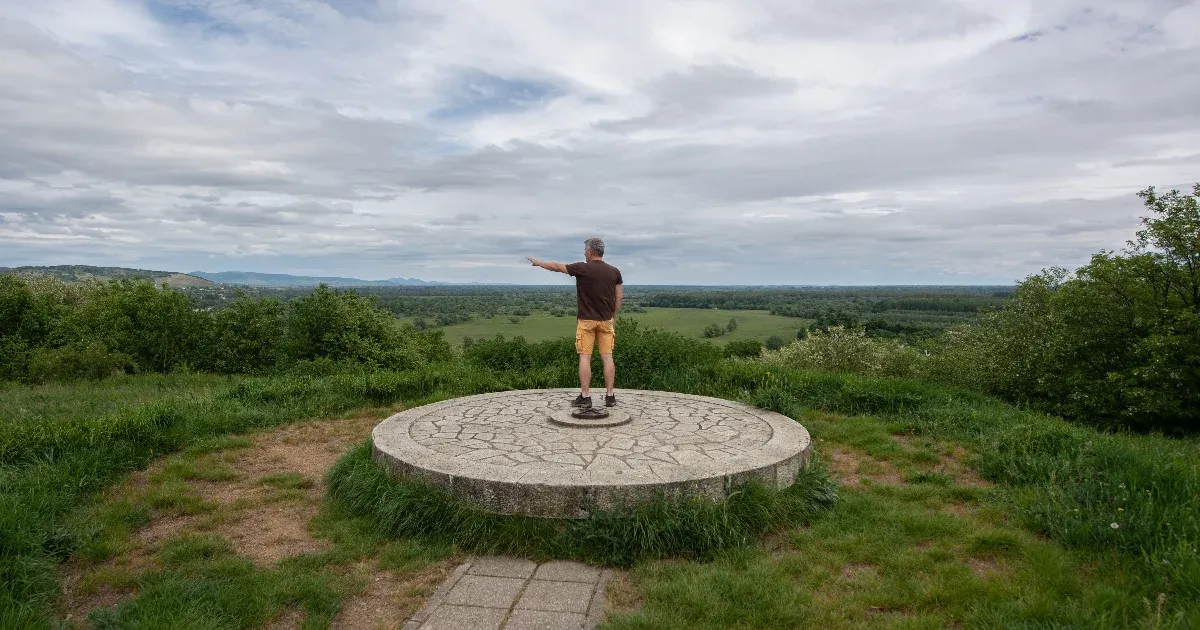
1. An unexpected twist around the infamous 40 centimeter lookout: trees are now obscuring the view
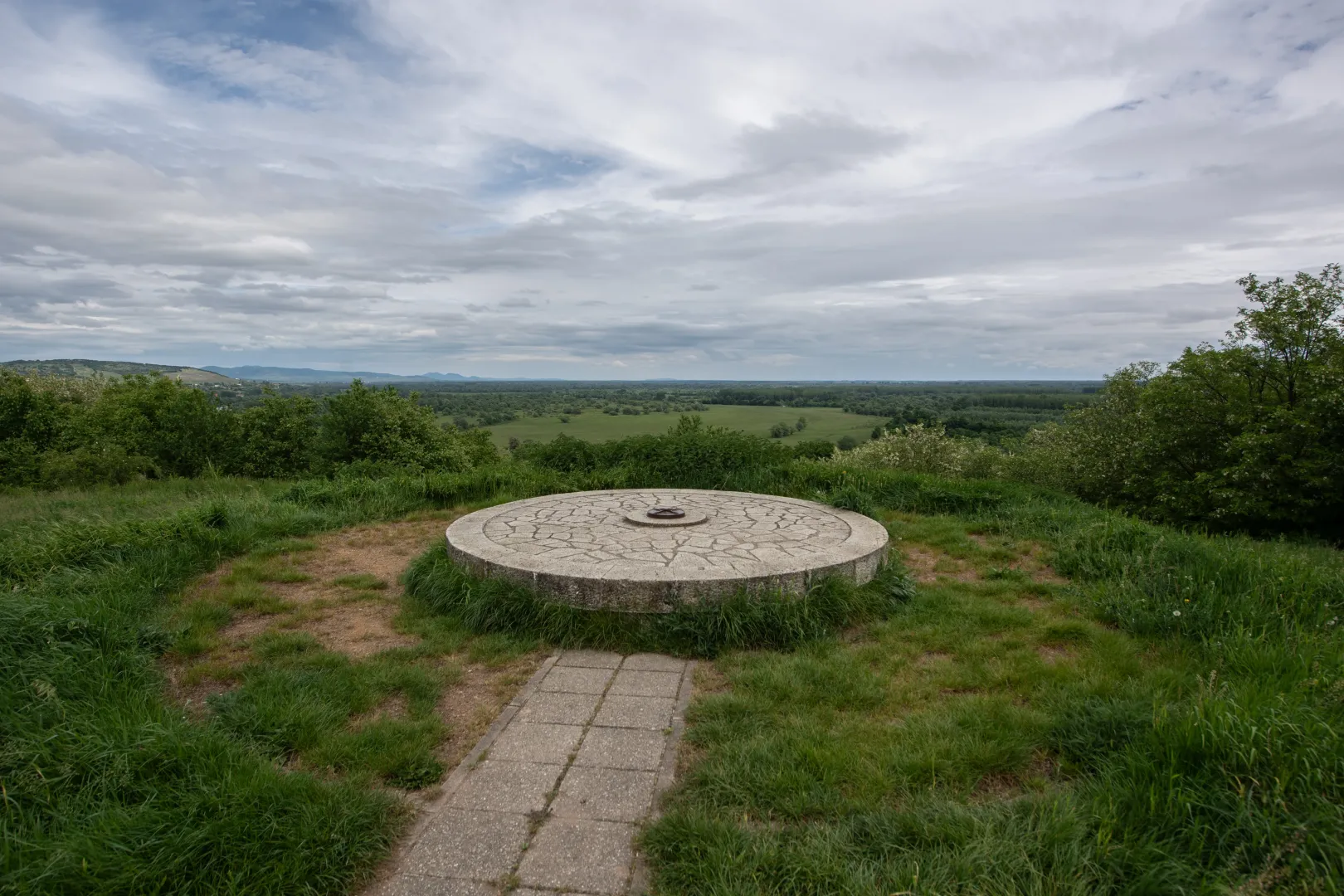
Photo: János Bődey / Telex
What better way to start our list than with the most perfect example of wasteful spending: the infamous 40 centimeter high observation point in Bodrogkeresztúr, which received 40 million HUF (103 thousand euros) in EU funding in 2007? At the time, the investor said that according to expert advice, building a higher one was not necessary, as the lookout already provided a good view. This was true at the time, but in the 17 years that have passed, a natural tree line has grown up in front of the hill, obscuring much of the river bend and the mountain from view, and will likely be blocking all of it soon. So what will happen then? Will they add another 40 centimeters for another 40 million?
It should be mentioned that the infamous lookout was more of a blessing than a curse from a tourism point of view: many people came to the village just to see it. As one local man told us: negative publicity is still publicity.
2. Most elements of the Sárazsadány Adventure Park are gone
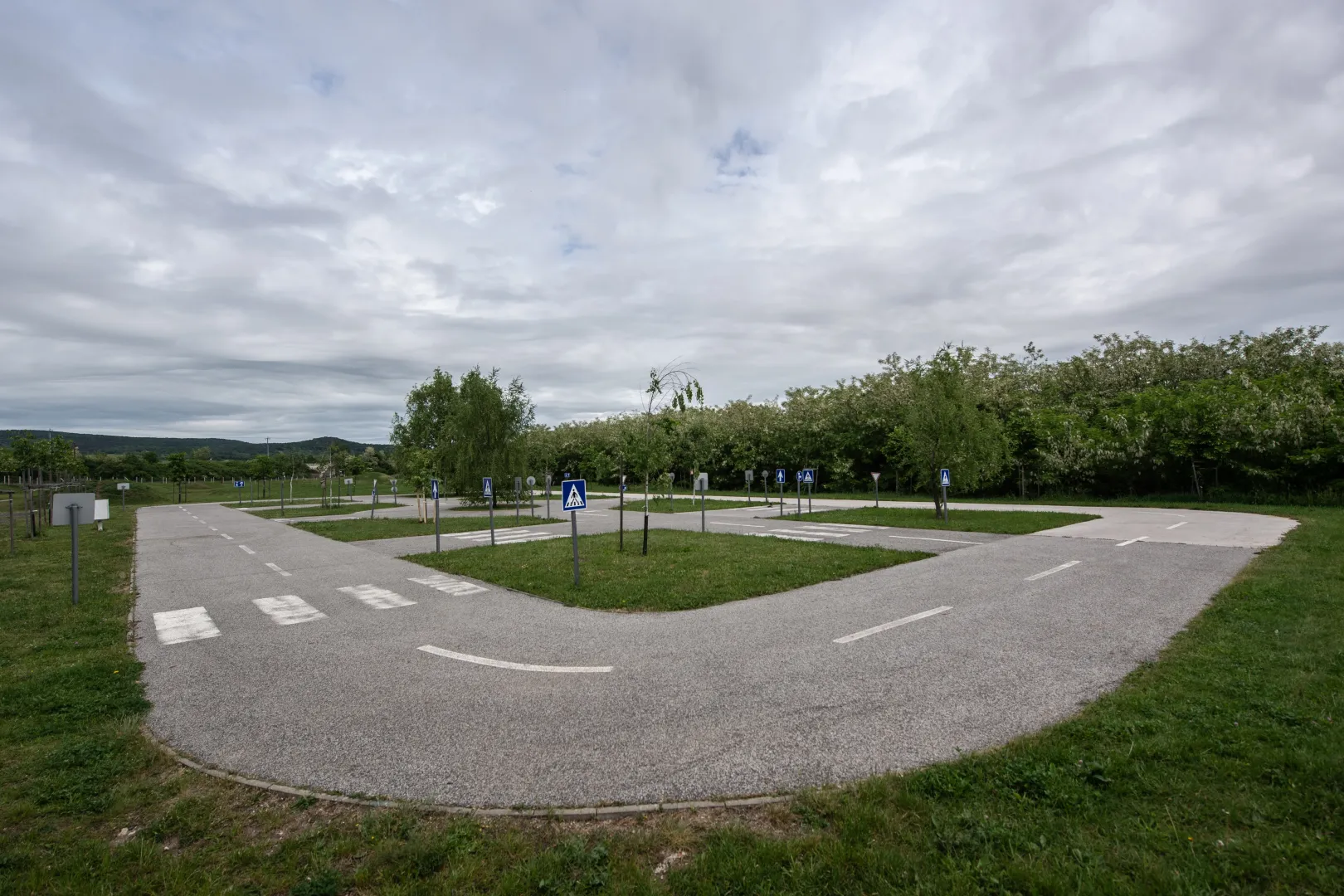
Photo: János Bődey / Telex
In 2015, Sárazsadány spent 35 million HUF (90,600 euros) of EU funding to build a cross-cycling track, plus a road safety track, a zipline and a playground. One could already foresee at the time that the open-air facility on the outskirts of the village would not be attracting masses. As we found out from two local men during our visit, the zipline was demolished because the village couldn’t afford to spend 50 000 forints on the renewal of the safety certificate. The redwood pegs and the land were sold. The BMX track has deteriorated and has several mounds of grass on it, nobody ever uses it (perhaps it’s also been sold). The bikes for hire and the floating platform on the Bodrog river with the canoes for hire were sold as soon as the five-year mandatory use period for EU investments expired. The road safety track and the playground are still there, groups of children occasionally come to use them, but as one local wryly put it, “How shall I put it… it’s not overcrowded.”
3. The gutted Great Turtle House in Rakamaz
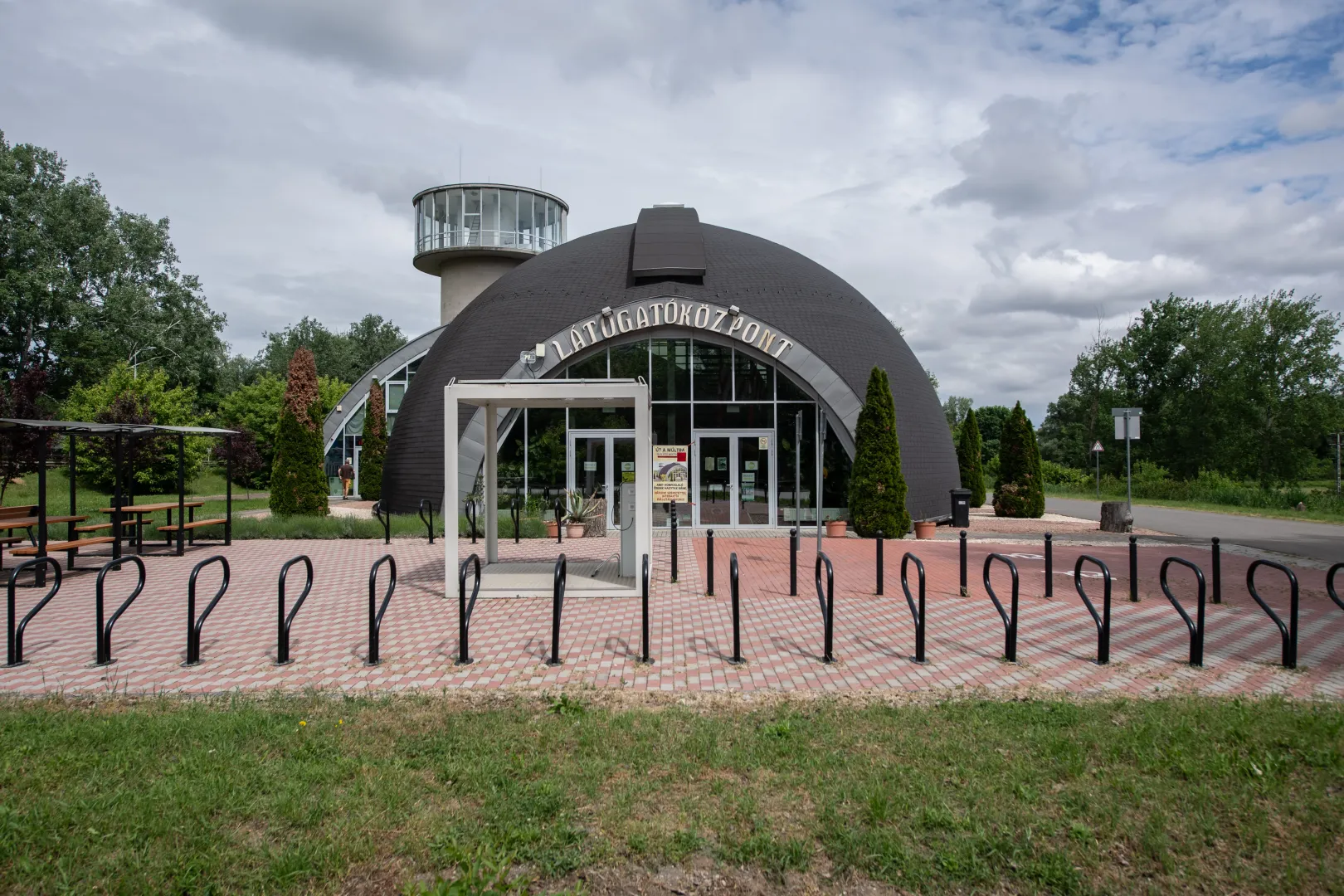
Photo: János Bődey / Telex
Three ornamental fishes swim sadly in the half-drained, beat-up, green aquarium of the Great Turtle House in Rakamaz – the sole heralds of what was once a commitment to providing “Ecological education in line with 21st century technology”. The rest of the eco-centre under a cheap aluminum roof has been converted into an exhibition about the ancient Magyars – complete with life-sized mannequins, shamans and a yurt. Admission to the quiet visitor center costs 1,000 forints, which also allows one access to the 20-meter-high glassed-in lookout tower. The staff doesn’t recommend using the elevator for fear of us getting stuck, but as it turns out, it’s not operational anyways. There is a bucket under the lookout’s leaky roof, and the window is so dirty that one couldn’t spot a white horse from behind it.
We ask about the starting point of the educational water trail, which supposedly has electric boats transporting visitors. “Educational water trail?” a local repeats what I said back to me with a sour smile, as if he’d just heard a joke. “Somebody thought that up once, but it was all just a big fuss,” he says. With all the delays, by the time it was completed, the project had cost a billion forints, and the mayor received a year’s suspended prison sentence in 2020 over the whole project.
4. The rapid rise and fall of the Tyukod lookout park
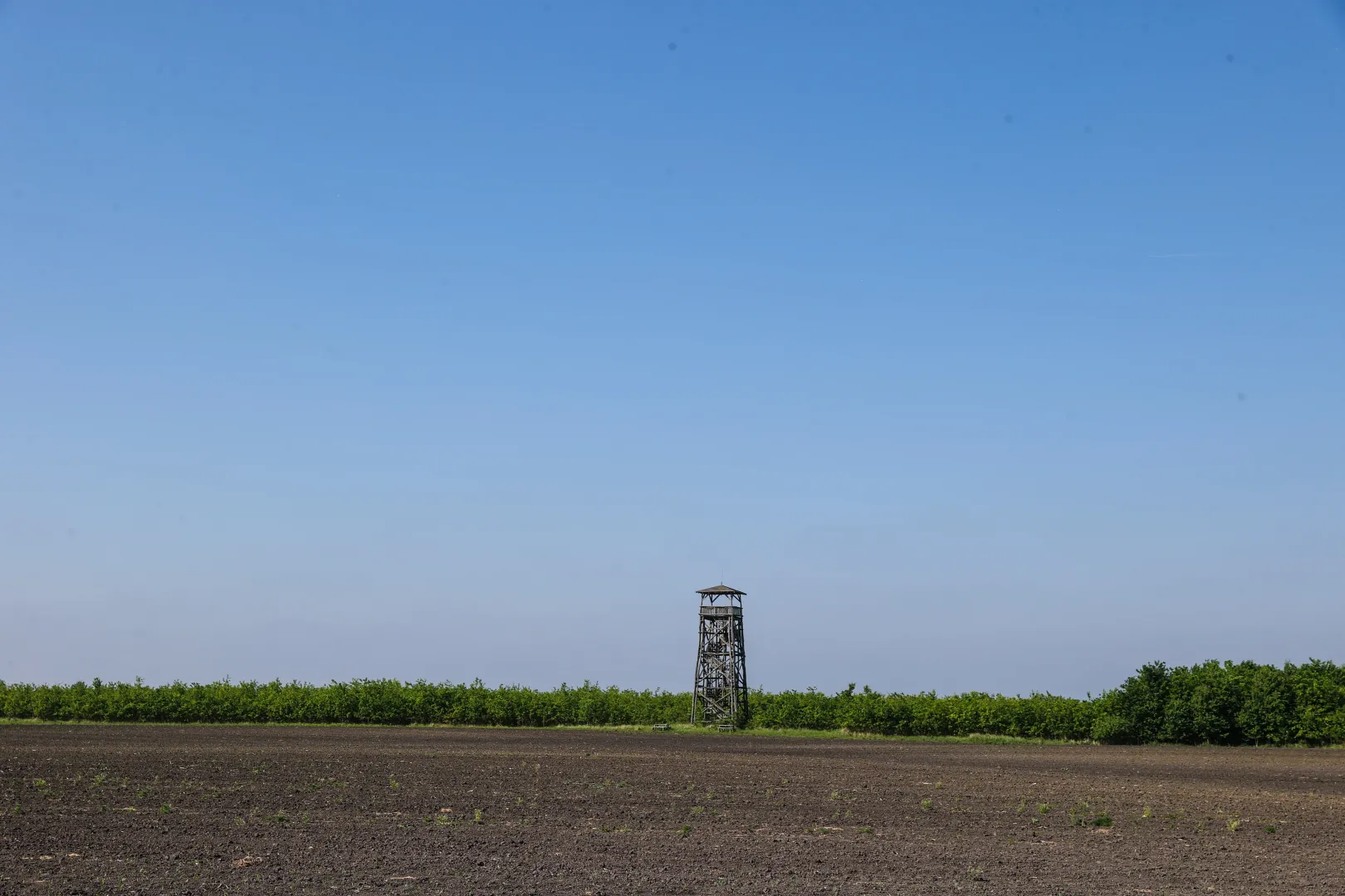
Photo: István Huszti / Telex
In 2015, eleven lookout points were built in the area around Tyukod, a village in Szabolcs-Szatmár-Bereg county, funded with a total of HUF 264 million (683,600 euros) from the EU. Only five of them were still standing last year, four had been demolished and the fate of two remains unknown. The lookouts in Tyukod were built by private foresters, who justified their tenders by claiming that these “public amenities in forests” serve the interests of tourism. However, given that Tyukod was not an attractive tourist destination before this either, and the wooden towers erected in the forest failed to change this, the lookouts have been left to decay.
5. The Cycling Adventure Park in Hatvan, closed almost immediately after opening
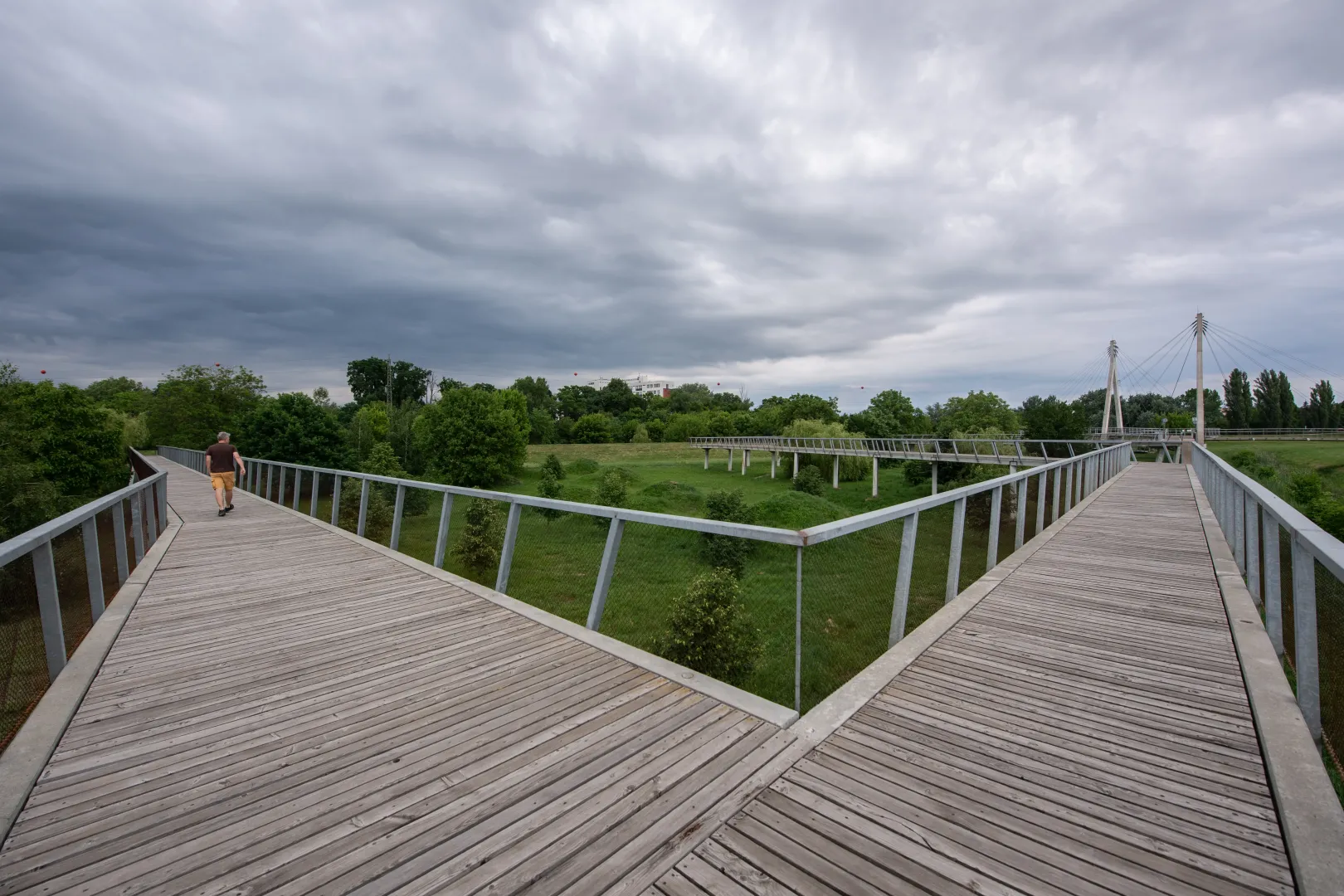
Photo: János Bődey / Telex
While searching for a trace of the scandal-ridden Cycling Adventure Park on the banks of the Zagyva, several Hatvan locals pointed us to the new, otherwise popular pump track course, and a couple walking by marveled at the actual site we had been looking for: “Gee, I didn’t even notice they’d demolished it!” “There was some kind of bad accident shortly after the opening, and that was the end of the track. Nobody used it, it just sat there, rotting,” we are told. The adventure park was built in 2015 with a budget of 140 million forints (362,000 euros) and a total of 55 people used it while it was open. The gross cost of the whole project, including the canopy around it, was one billion forints (2,5 million euros) while the trees around it have only recently, nine years later began to reach the level of the structure. The remnants of the track were still visible beneath the canopy last year, but today the area just looks like a bunch of grave mounds.
6. Nyírmártonfalva: the crown jewel of Hungarian canopy walkways
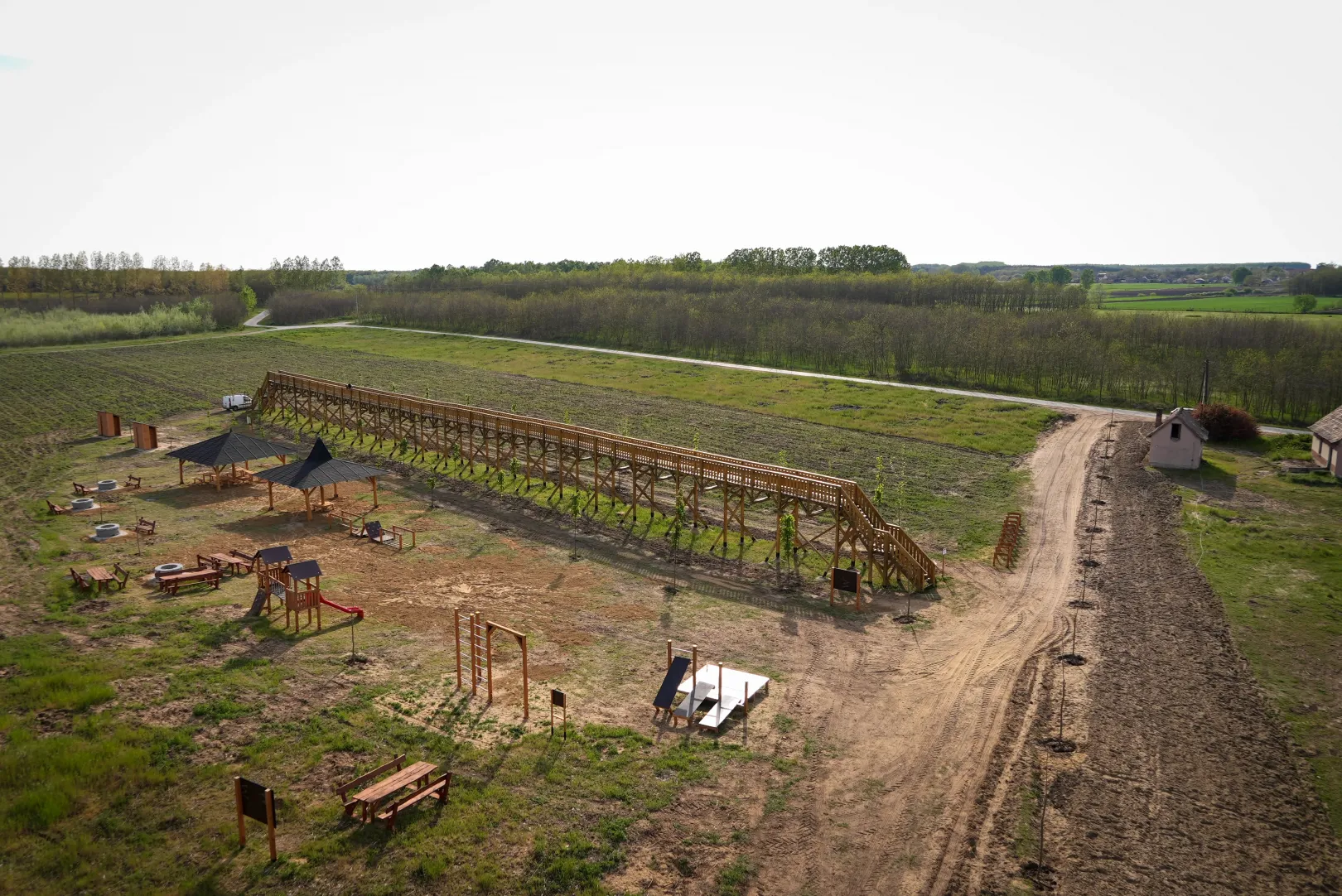
Photo: Péter Lengyel-Szabó / Telex
The forest-less canopy walkway of Nyírmártonfalva should really be included in the list of Hungaricums – unique Hungarian inventions. It’s the perfect example of the method whereby one believes they can start building a house from the roof down. The only thing missing here to ensure that the finished promenade could be enjoyed were the trees, which the municipality cut down while it awaited the decision on the application for the walkway. But the HUF 60 million (155,300 euros) funding finally came through, and the canopy walkway was built, with the expectation that the trees would eventually grow back. And there’s hope indded that they will, as the new saplings planted next to the walkway were already sprouting nicely last year.
7. Hungary’s most expensive stairs in Újbuda
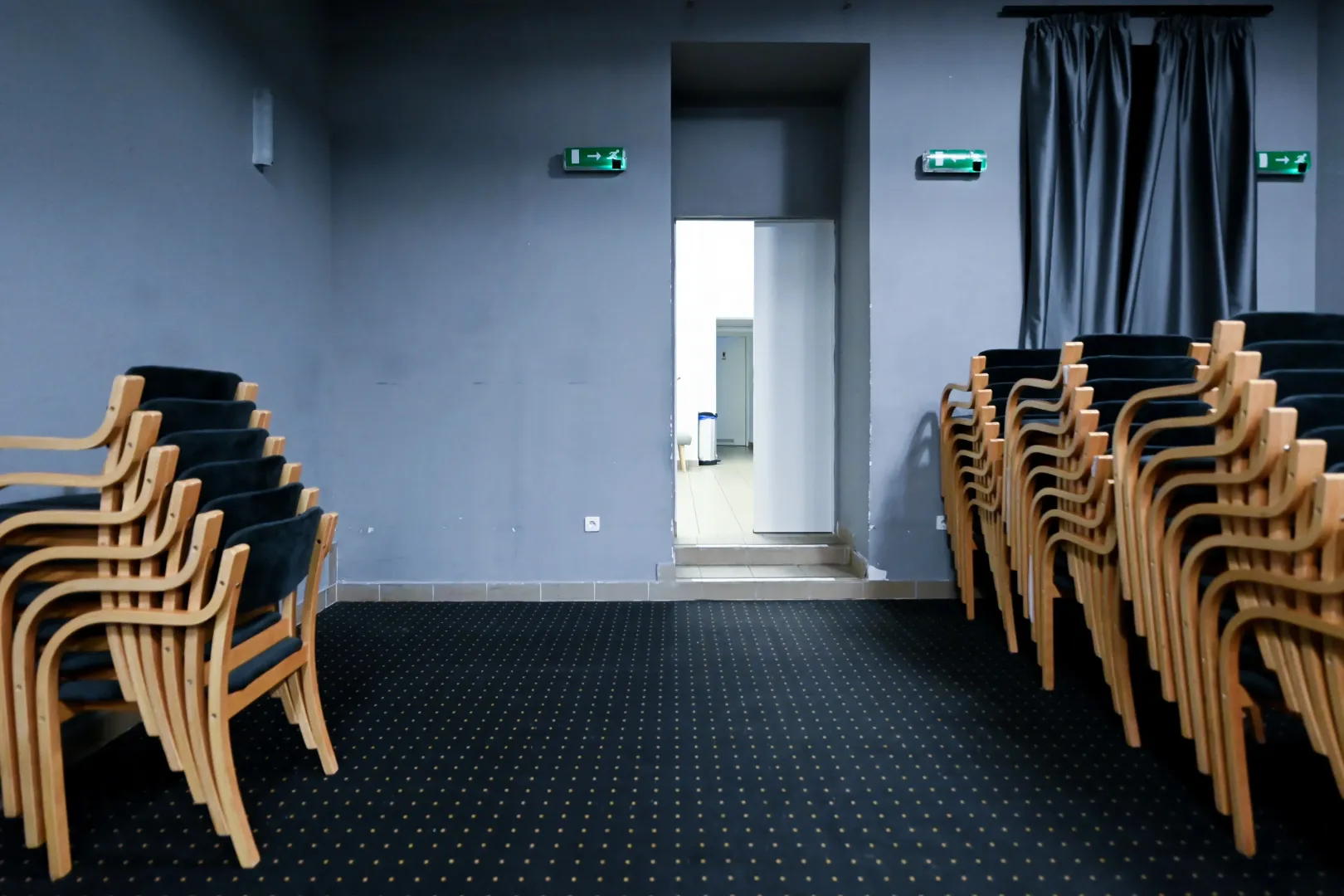
Photo: János Bődey / Telex
The B32 Gallery on Budapest’s Bartók Béla Street was opened in 2014, and was renovated and expanded with EU funding by the municipal government of the capital’s 11th district. The new cultural center made our list thanks to a single item. Ensuring the accessibility of such a venue is mandatory in the case of EU-funded projects. Here, however, they solved this by installing a mobile wheelchair lift costing HUF 1.66 million (4100 euros) in order to remove the barrier of one 20cm step. On a recent visit to the site, we found out that the problem had been later solved by simply bricking up the door leading to the stairs in question and using a cheap mobile ramp to provide access to the new entrance to the theater. The parts of the original device are being used for another, otherwise well-placed wheelchair lift.
8. The Himalayas of the Hungarian Plain in Jakabszállás
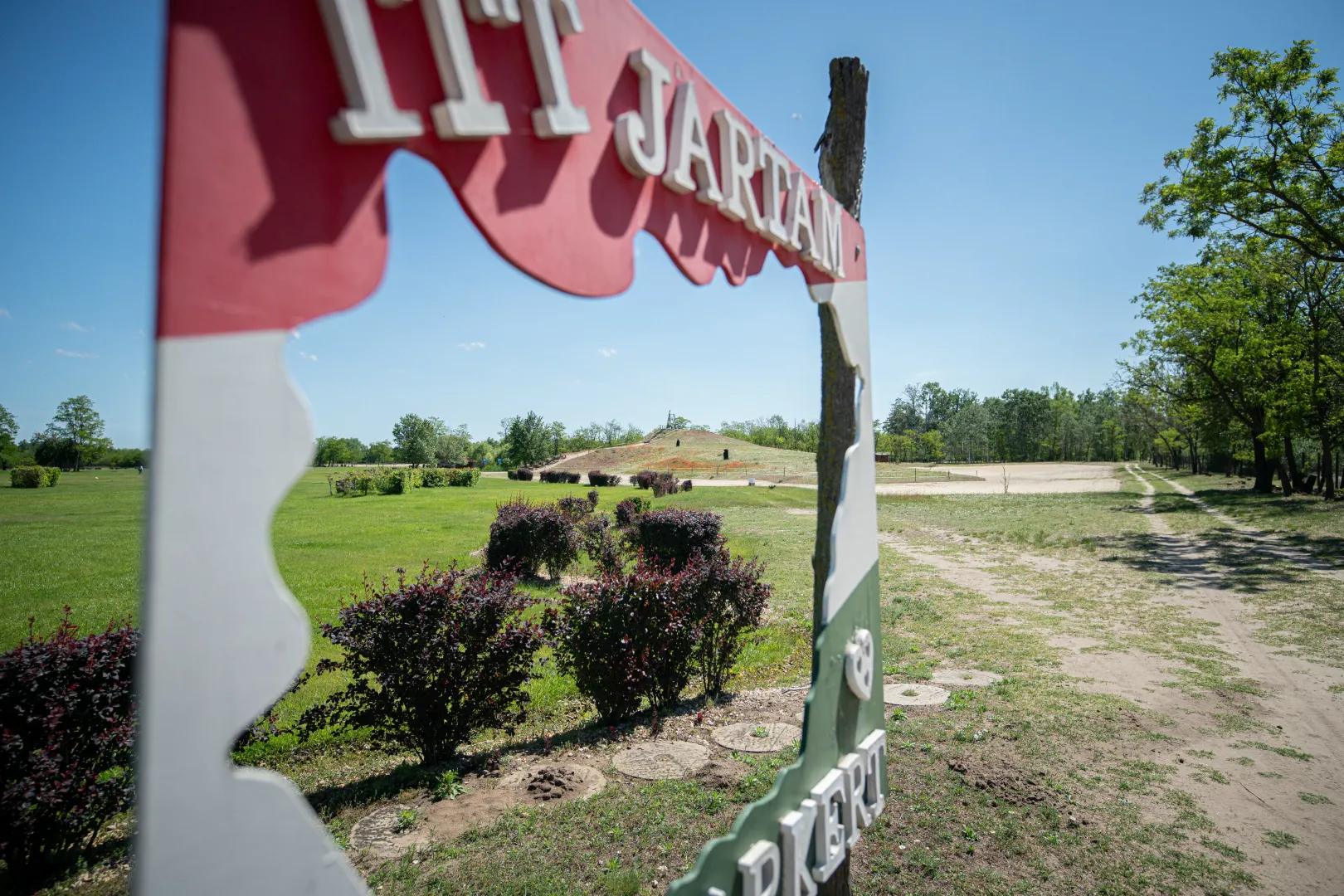
Photo: Dániel Szűcs / Szegeder / Telex
A sledding hill built in 2013 at Jakabszállás with EU funding of HUF 37 million (95,800 euros) quickly earned the nickname the Himalayas of the Hungarian Plain. Our correspondent managed to ski down it in the winter of 2017, but not many people have had the pleasure of doing so – as it rarely snows there. No wonder the whole business went bankrupt in 2014. The new owner, who took over the property, fixed up what he could under the name of Magyarkert, (Hungarian Garden) and there have even been two years where the weather permitted locals to go sledding. He said they would have liked to build a plastic ski slope that could be used in both winter and summer, but it would have cost an enormous amount of money. In fact, because of the previous owners, the property has been blacklisted, which means it is not eligible for tenders. At the moment, their main attraction is a Hungary-shaped garden, which gets a lot of visitors.
9. The Kunszentmárton beach

Photo: Dániel Szűcs / Szegeder / Telex
The Kunszentmárton open beach, developed with a budget of more than HUF 50 million (129,500 euros) was officially opened three years ago. According to the technical description of the project, “the clearing of the area and the bank were followed by the creation of a beach area”. On our tour of the site, we first came to a pier, where a woman told us that “the free beach is down there, but people don’t swim there because it’s very muddy, they only take their dogs down there”.
We walked there and sure enough, “the beach” is more appropriate for mud bathing. An elderly fisherman we found told us that the area is mostly used as a landing area for boats. A sign near the shore reminds us where we are: “Swimming at your own risk only!” There is also a toilet container, a football pitch that barely resembles a field, and a playground by the beach. Anyone looking for shade here should give up on that, because there’s a sign on the trees that says: “Staying under the trees is forbidden and can be dangerous.”
10. The bus stop-lookout in Nyugotszenterzsébet
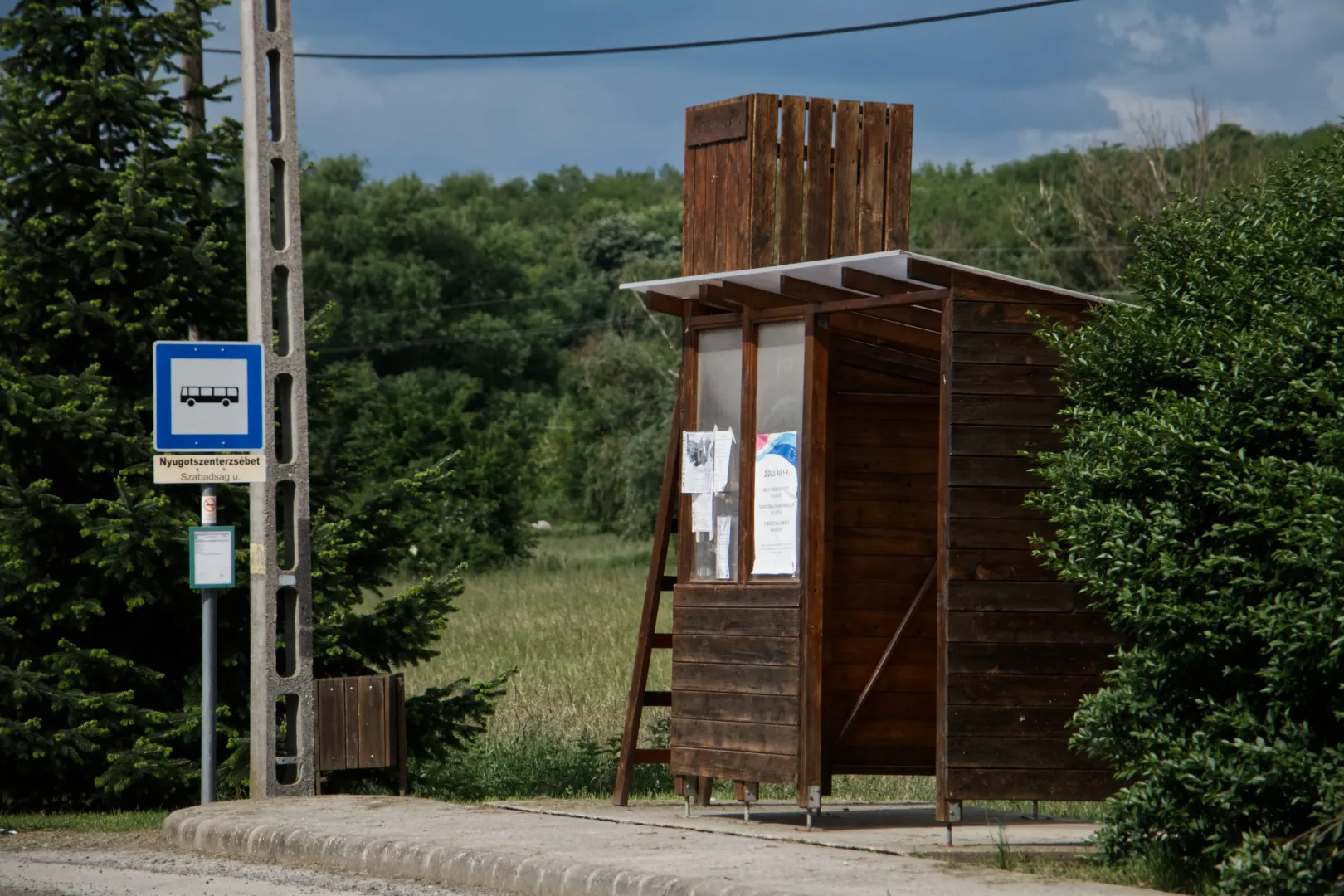
Photo: Ervin Gűth / Telex
The Nyugotszenterzsébet bus stop, listed on Google Maps as the Erzsébet Lookout, made big news in 2018. The Baranya municipality needed a sheltered bus stop, but the only bids available were for a lookout. And thus, the famous Nyugotszenterzsébet bus stop-lookout was born. The locals don’t regret the investment: thanks to the new bus stop, some of the residents of the long, dead-end village no longer have to walk a kilometer in the snow and mud to the other bus stop in winter months.
We put the lookout to the test: some of the steps of the ladder had apparently been replaced, and the top one is currently being repaired, but the hybrid structure still fulfills both functions perfectly. We wait and look around a bit from the top, but as there is no bus service on weekends, the latter attempt is less successful. “We do our best to maintain everything. If for no other reason, then because it’s hard to see when there will be money for any sort of development again,” Balázs Vincze, the municipality’s mayor tells us.






